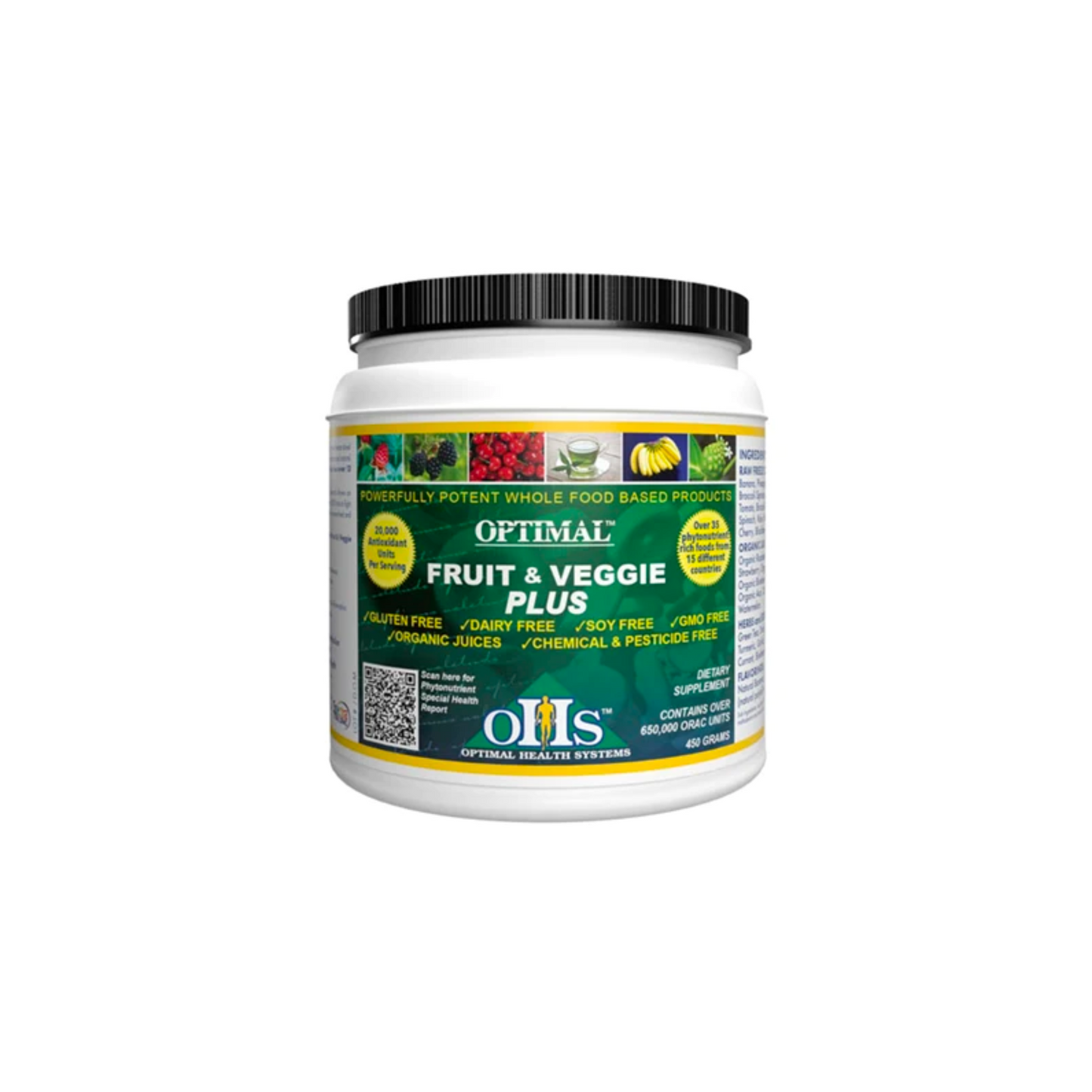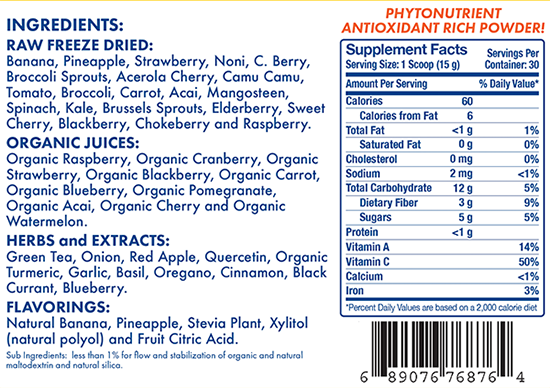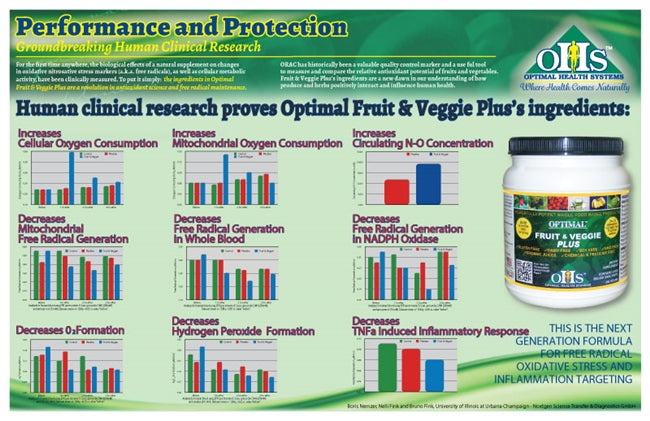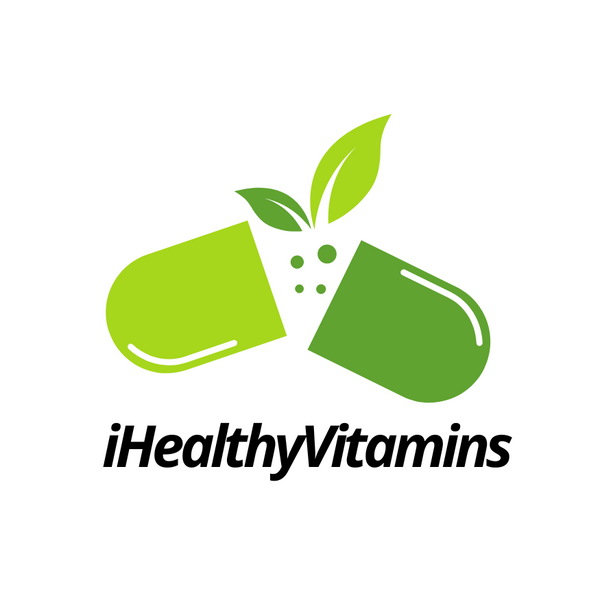My Store
Optimal Fruit and Veggie Plus
Optimal Fruit and Veggie Plus
Couldn't load pickup availability
Suggested Nutritional Support Uses
- Metabolic Disorders
- Cancer
- Improve Taste Of Other Powders
- Healthy Snack
- Degenerative Diseases
- Antioxidant Source
- Overall Body Inflammation
This is the most potent antioxidant and phytonutrient powder on the market. Antioxidants fight something called free radicals, which are unbalanced molecules that cause all sorts of damage, until antioxidants step in and balance them out. There are five major types of free radicals, and this formula has been proven to balance all of them.
Formulated to Provide a Massive Dose of Disease, Inflammation and Age-Fighting Antioxidants
How It Works
Provides a pure, potent blend of phytonutrients and antioxidants to quell inflammatory markers and fuel the body.
Dosing
Take 1 scoop mixed with water or healthy fluid of choice once per day.
Contraindications
None




Key Ingredients & Their Roles
Raw freeze-dried fruits & vegetables - 14 fruits and vegetables chosen for the high antioxidant capacity
Organic Juices - 10 fruits and vegetables chosen for the high antioxidant capacity
Herbs & Extracts - 14 fruits and vegetables chosen for the high antioxidant capacity
Backed by 9 Government-Approved Claims

Proven to Neutralize All 5 Major Free Radicals
Many scientists and researchers thought for years that it was only vitamins and minerals found in produce that provided health benefits. Recently there has been a tidal wave of research reporting on newfound compounds in whole foods that significantly help the body prevent and even cure disease. These compounds are called phytonutrients.
Phytonutrients are neither vitamin nor mineral; they’re bacteria. Plants naturally produce phytonutrients, which protect them against viruses, bacteria, fungi, predators, and the sun’s harmful effects.
A plethora of studies from all over the world have irrefutably proven that these compounds provide the same health benefits and protection for the people who consume them. One of the greatest benefits of phytonutrients is their broad antioxidant abilities.
1. PEROXYL RADICAL
These damage cell linings and increase inflammation and damage to arteries. This is why they greatly influence cardiovascular diseases, such as atherosclerosis and heart disease.The best antioxidant foods to combat peroxyl radicals: Cruciferous vegetables like broccoli sprouts, broccoli, carrots, spinach and kale.
2. SUPEROXIDE ANION RADICAL
Mitochondria are present in every cell except red blood cells. When they’re damaged by free radicals, you feel the effects through low energy and an inability to exercise for as long as you used to. In addition, muscle loses its ability to recover as fast and this develops into mitochondrial diseases.The best antioxidant foods to combat superoxide anion radicals: Green tea, certain types of apples, elderberry and other berries.
3. HYDROXYL RADICAL
These are implicated in most cancers and autoimmune diseases. They target DNA and create oxidative damage that renders the body susceptible to debilitating diseases.The best antioxidant foods to combat hydroxyl radicals: Turmeric extract, garlic concentrate, basil, oregano and cinnamon. Other herbs are also beneficial.
4. SINGLET OXYGEN RADICAL
They target tissues, nerves and blood flow to the eyes. They have been implicated in eye diseases, such as macular degeneration.The best antioxidant foods to combat singlet oxygen radicals: A wide variety of berry concentrates and extracts, which include bilberry, raspberry, black currant, blueberry, sweet cherry, açai and more.
5. PEROXYL-NITRITE RADICAL
These target nerves and are implicated in many neurodegenerative diseases, like Alzheimer’s and Parkinson’s disease.The best antioxidant foods to combat peroxyl-nitrite radicals: Acerola, camu camu, mangosteen, quecertin and açai.
Understanding Oxygen
For years, researchers have known that the largest cause of wrinkles, ailing joints, arthritis, heart disease, and even cancer stem from the same deterioration process that occurs in non-human objects. The cause is oxidation. Molecules called free radicals are the culprit.
It’s ironic that the same air we need to live causes metal to rust, fruits and vegetables to turn brown, and your body’s cells to age and weaken. Oxygen provides abundant health and long life when it is paired with antioxidants. When polluted oxygen is drawn into the body, or after it’s used for metabolism, chemical changes to oxygen occur. The molecules lose electrons, making them unstable. These unstable molecules are called free radicals. The damage they cause is called oxidation.
The whole process can be pretty violent. When the molecule grows unstable, it has the equivalent of a panic attack and starts stealing electrons from healthy cells, be it blood cells (heart disease/aging), brain cells (dementia/Alzheimer’s), skin cells (wrinkles), joints (arthritis/pain), organs (cancer), and even muscle cells (decreased performance/muscle loss/fibromyalgia).
Different types of free radicals are created and, depending on the type, the type of attacked cells become known.
Free Radicals Attack from Within
When healthy cells are attacked, more free radicals are created and a cascade effect happens, causing tremendous damage. Have you ever noticed how fast metal rusts if left outside, or how quick fruits brown if left on the counter. Your body can be damaged just as quickly, unless free radical oxidation is stopped.
When people hear of free radicals for the first time, they often think of foreign invaders, like bacteria or viruses, but they’re not. Yes, external factors like cigarette smoke, airborne chemicals, and pollution causes oxidative damage through breathing. However, the difference is, unlike bacteria and viruses, your body naturally creates free radicals just through metabolism.
In other words, your body creates free radicals as it produces energy. Since free radicals naturally occur in your body, so do the antioxidants. Your body’s ability to make antioxidants comes from the same exact source that make fruits, vegetables, and herbs colorful: phytonutrients.
The Antioxidants Found in Fruits and Vegetables
Antioxidants are the worker components that make up the majority of a phytonutrient compound in fruits and vegetables. They are molecules that have an abundance of electrons. When the antioxidant molecule enters your bloodstream, it travels around and bumps into free radicals. Instead of getting damaged (oxidized), like what happens to other molecules, the antioxidant offers up a spare electron, which balances out and neutralizes the free radical. This stops the cascade of oxidation. The amazing natural structure of antioxidant phytonutrients is nature’s answer and protector.
Countless studies confirm the need to get nutrients from whole foods or whole food supplements, yet many people still fall victim to the lab-created vitamin trap and risk their health. The latest research has unearthed that many more antioxidants exist besides the ones found in vitamins. These antioxidants are called phytonutrients, and they exist in whole foods.
Systemic inflammation (meaning it occurs from head to toe) causes or leads to serious pain, joint damage, accelerated aging, and organ failure. Arterial linings become inflamed because of free radicals causing today’s #1 killer: heart disease.
Even before serious damage occurs, inflammation causes fatigue, swelling, and poor performance both physically and mentally. One of the most immediate and dramatic benefits of consuming a variety of organic produce each day is the noticeable inflammation reduction in just a few weeks. Swelling goes down, energy goes up, you think clearer, and physical performance improves.
The greatest benefit is that you can add quality years to your life. Most people notice these changes and feel them quickly.
One serving of Optimal Fruit & Veggie Plus contains over 13 times the antioxidant potency the average American gets per day.
Share







